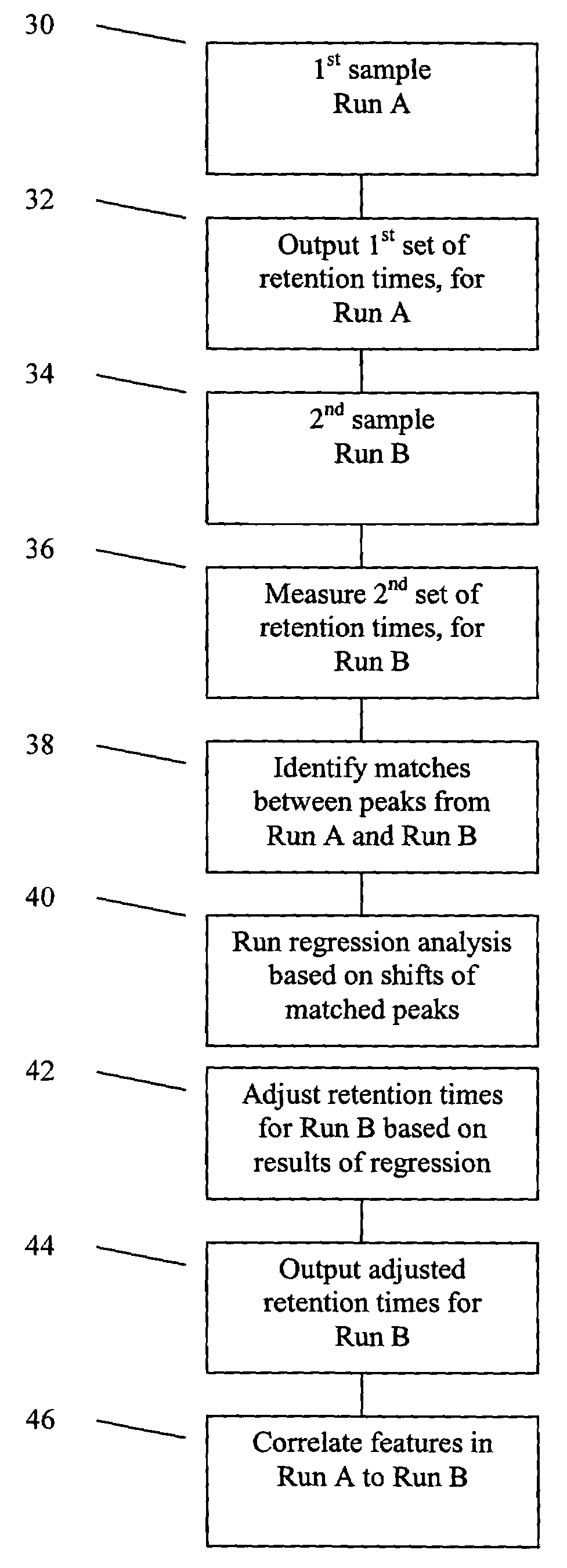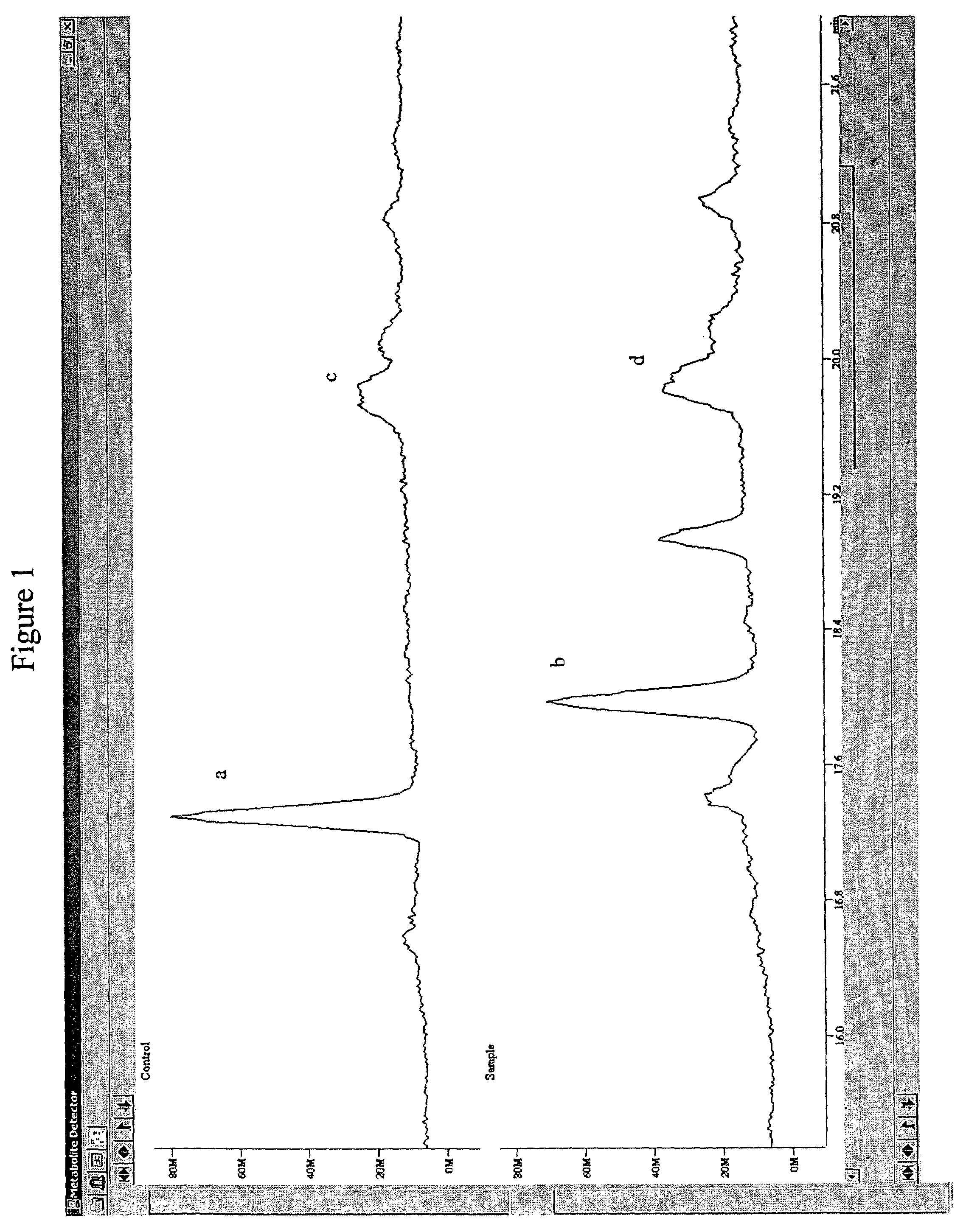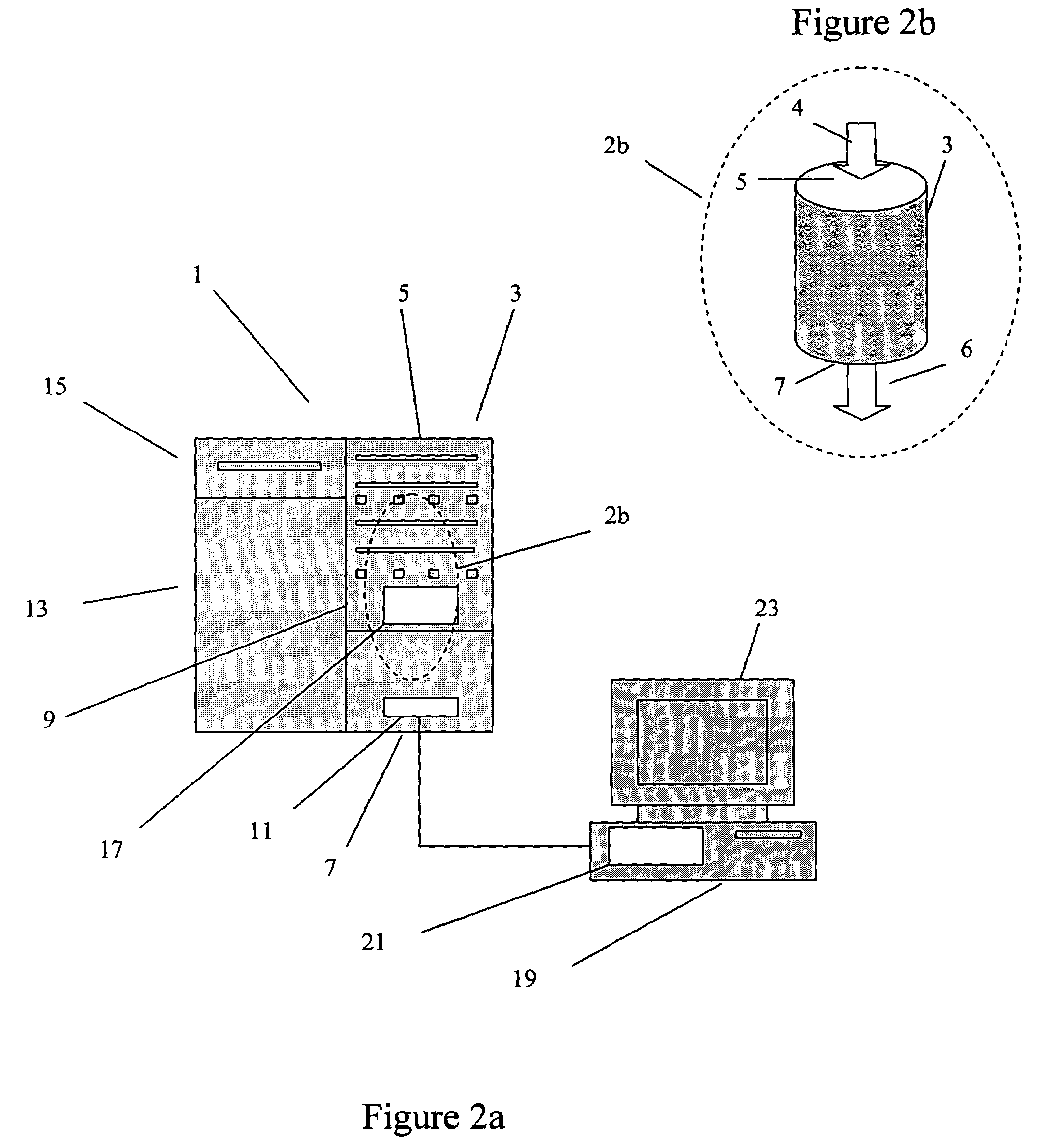System and method for feature alignment
a technology of feature alignment and system, applied in the field of system and method for feature alignment, can solve the problems of large amount of work, measurement errors, improper calibration or external unpredictable stimuli, etc., and achieve the effect of reducing the possibility of mismatches (or mistaken correlations), reducing the size of the tolerance window, and reducing the overall retention time deviation
- Summary
- Abstract
- Description
- Claims
- Application Information
AI Technical Summary
Benefits of technology
Problems solved by technology
Method used
Image
Examples
Embodiment Construction
[0019]The term alignment refers to correlating or associating two features of the same compound or same part of a compound, which are present in two runs, respectively.
[0020]The term feature refers to a physical or chemical or biological property of a compound or part of a compound, such as, for example, molecular weight, atomic mass, chemical structure, that can be represented by particular physical parameters, such as, for example, as presented in a LC-MS dataset with a representative retention time and m / z.
[0021]The term retention time refers to the amount of time that a given compound or part of a compound takes to pass through a chemical analysis system, such as, for example, a chromatography system.
[0022]The term systematic shift refers to deviations relating to systematic sources, such as, for example, those caused by variations in gradient rate, solvent composition, and column aging.
[0023]When determining whether two features from two separate runs correspond to the same che...
PUM
| Property | Measurement | Unit |
|---|---|---|
| physical separation | aaaaa | aaaaa |
| exit time | aaaaa | aaaaa |
| retention time | aaaaa | aaaaa |
Abstract
Description
Claims
Application Information
 Login to View More
Login to View More - R&D
- Intellectual Property
- Life Sciences
- Materials
- Tech Scout
- Unparalleled Data Quality
- Higher Quality Content
- 60% Fewer Hallucinations
Browse by: Latest US Patents, China's latest patents, Technical Efficacy Thesaurus, Application Domain, Technology Topic, Popular Technical Reports.
© 2025 PatSnap. All rights reserved.Legal|Privacy policy|Modern Slavery Act Transparency Statement|Sitemap|About US| Contact US: help@patsnap.com



